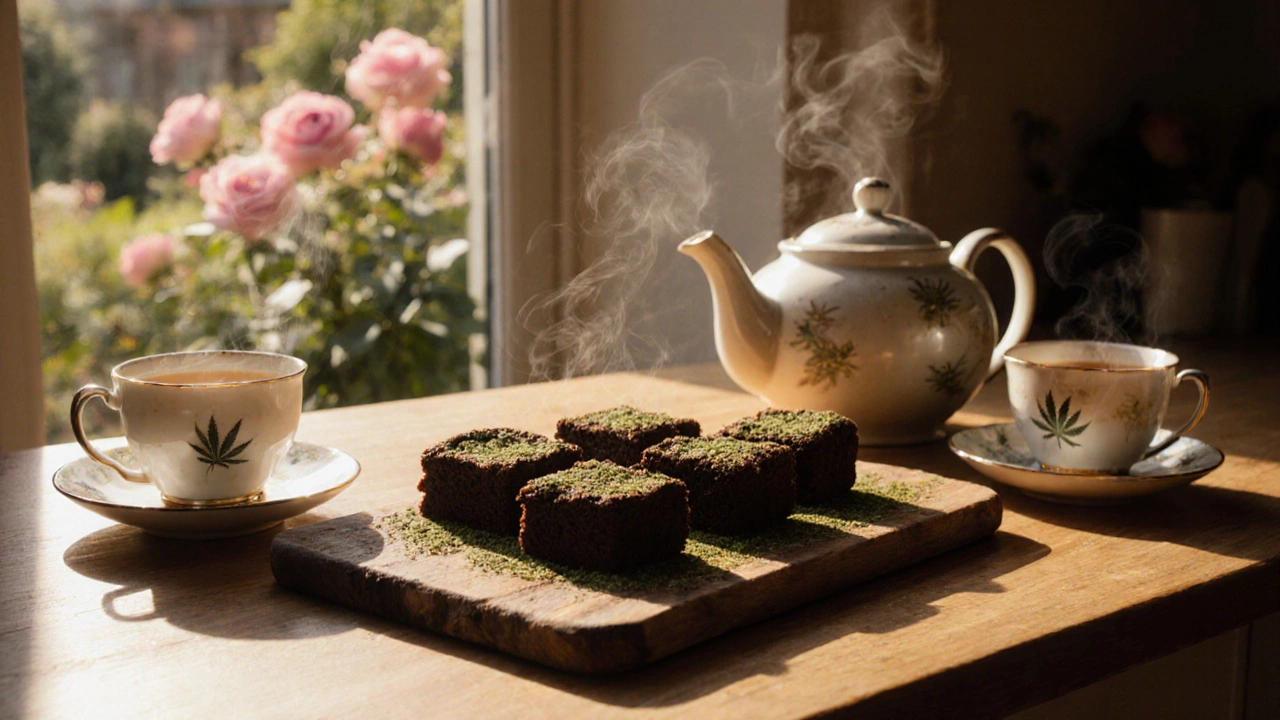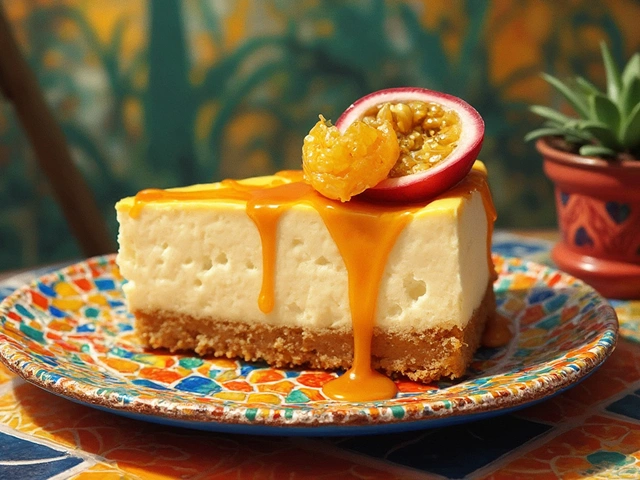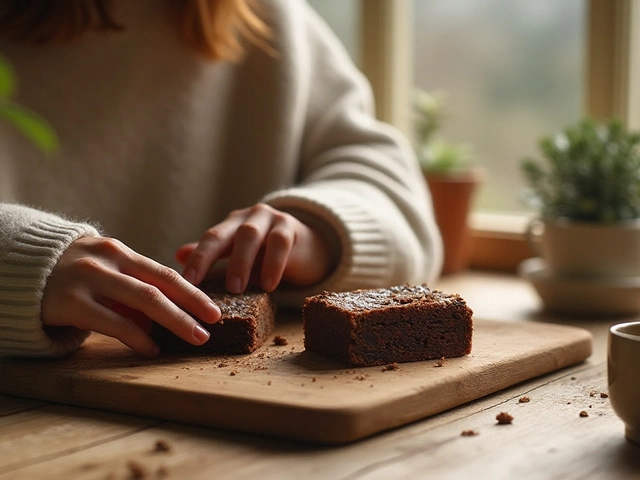Cannabis Brownie Effects Calculator
Estimate the effects of your cannabis brownie based on dosage and timing.
Cannabis‑infused brownie is a baked dessert that contains decarboxylated cannabis extract, typically rich in THC, CBD, or a balanced mix of both. Because the cannabinoids are delivered via fat, the brownie becomes a classic edible with a slower onset but longer lasting effects compared to smoking.
What Happens When You Eat a Cannabis Brownie?
The journey starts in the stomach. After you bite into the brownie, the fats carry the cannabinoids through the digestive tract, where they’re absorbed into the bloodstream via the liver. This metabolic step converts THC‑a (the inactive acid) into THC, the psychoactive compound that binds to CB1 receptors in the brain.
Key milestones:
- Onset: 30‑90 minutes, depending on metabolism and whether you ate on an empty stomach.
- Peak: 2‑3 hours after consumption.
- Duration: 4‑8 hours, with a gradual taper.
Core Entities Shaping the Experience
Below are the main players that determine how a cannabis brownie feels.
THC (tetrahydrocannabinol) is a potent psychoactive cannabinoid that produces the “high” by activating CB1 receptors in the central nervous system.
CBD (cannabidiol) is a non‑intoxicating cannabinoid known for anxiety relief, anti‑inflammation, and counter‑acting some THC side‑effects.
Dosage refers to the amount of THC or CBD in milligrams per serving. A common starting point for beginners is 5‑10mg THC.
Onset time is the interval between ingestion and noticeable effects. It varies with stomach contents, body weight, and tolerance.
Duration indicates how long the effects remain noticeable, typically longer for edibles than for smoked cannabis.
Metabolism is the body’s process of breaking down cannabinoids, mainly in the liver via the CYP450 enzyme system.
Potency measures the concentration of cannabinoids per gram of brownie. High‑potency brownies can contain 20mg THC or more per piece.
Tolerance describes the reduced response to cannabinoids after repeated use, requiring higher doses for the same effect.
Comparing Different Types of Cannabis Brownies
| Attribute | THC‑Dominant | CBD‑Dominant | Regular (no cannabis) |
|---|---|---|---|
| Primary Cannabinoid | THC (15‑30mg per serving) | CBD (15‑30mg per serving) | None |
| Psychoactive Effect | Strong euphoria, altered perception | Minimal; may reduce anxiety | None |
| Onset | 45‑90min | 45‑90min | 10‑20min (sugar spike) |
| Duration | 4‑8hr | 4‑8hr (mostly therapeutic) | 1‑2hr (energy drop) |
| Common Uses | Recreation, creativity boost | Stress relief, inflammation | Dessert enjoyment |
How to Choose the Right Dosage
Getting the dosage right is the biggest factor in a positive experience. Below is a simple decision tree:
- Identify your tolerance level:
- Beginner: 5‑10mg THC per serving.
- Intermediate: 10‑20mg THC.
- Advanced: 20mg+ THC, but proceed with caution.
- Decide on the desired effect:
- For relaxation without strong euphoria, opt for a CBD‑dominant brownie or a low‑THC blend (5‑10mg THC + 15mg CBD).
- For creativity or social boost, choose a THC‑dominant piece within your tolerance range.
- Consider your environment:
- Safe, familiar settings reduce anxiety risks.
- Avoid driving or operating machinery for at least 8hours after consumption.

Potential Positive Effects
When taken responsibly, cannabis brownies can provide:
- Relaxation: Activation of CB1 receptors reduces cortisol, easing tension.
- Enhanced Sensory Perception: Many report heightened taste, music appreciation, and visual detail.
- Pain Relief: THC and CBD together can modulate pain pathways, useful for chronic aches.
- Appetite Stimulation: The classic “munchies” can be therapeutic for patients with appetite loss.
- Improved Mood: Endorphin release triggered by cannabinoid activity often lifts mood.
Potential Side Effects and Risks
Every cannabinoid experience carries possible downsides. Knowing them helps you stay in control.
- Dry Mouth & Eyes: Common, can be mitigated with water and eye drops.
- Paranoia or Anxiety: More likely with high THC doses, especially in low‑tolerance users.
- Heart Rate Increase: THC can raise pulse by 20‑30bpm; people with cardiac conditions should consult a doctor.
- Impaired Coordination: Effects linger, so postpone physical tasks.
- Over‑consumption: Edible dosing errors (e.g., misreading mg) can lead to uncomfortable “green out” - nausea, dizziness, and lingering sedation.
Tips for a Safe and Enjoyable Experience
These practical habits turn a potential nightmare into a mellow evening.
- Start Low, Go Slow: Begin with 5mg THC, wait 90 minutes before deciding to take more.
- Stay Hydrated: Water mitigates dry mouth and helps metabolism.
- Know Your Batch: Lab‑tested products list exact cannabinoid percentages; avoid “guesswork” brownies from unverified sources.
- Set & Setting: Choose a comfortable space, preferably with a trusted friend nearby.
- Have Snacks Ready: If you get the munchies, a mix of fruit and nuts prevents sugar crashes.
- Plan a Recovery Period: Give yourself at least 8hours before driving or making important decisions.
Related Concepts to Explore
Understanding cannabis brownies fits into a larger puzzle of cannabis edibles, the broad category of foods infused with cannabinoids. Within that world, you’ll also encounter decarboxylation, the heating process that activates THC and CBD, and terpenes, aromatic compounds that shape flavor and can modulate the high.
Future reading could dive into microdosing edibles, the science behind pharmacokinetics of cannabinoids, and the legal landscape of recreational cannabis in Canada.
Frequently Asked Questions
How long does it take for a cannabis brownie to kick in?
Most people feel the effects between 30 and 90 minutes after eating. Empty‑stomach consumption can shorten the onset, while a full meal may push it toward the 2‑hour mark.
What is a safe beginner dose for THC brownies?
Start with 5mg of THC (about one‑quarter of a typical 20mg brownie). Wait at least 90 minutes before deciding whether to take more.
Can I combine THC and CBD in the same brownie?
Yes. A 1:1 or 2:1 THC‑to‑CBD ratio is popular because CBD can smooth out THC‑induced anxiety while still providing a mild high.
Are there any health risks for people with diabetes?
Brownies are sugary, so they can raise blood glucose. Cannabis itself may affect insulin sensitivity, but the evidence is mixed. Diabetics should monitor blood sugar and choose low‑sugar recipes.
What should I do if I feel too high after a brownie?
Find a calm, safe space, stay hydrated, and remind yourself the feeling will fade. Light snacks, especially something sweet, can help. If severe anxiety or panic occurs, a CBD tincture or a dose of black pepper (which contains beta‑caryophyllene) may ease symptoms. In rare extreme cases, seek medical help.
Can I make a gluten‑free cannabis brownie?
Absolutely. Substitute regular flour with almond, coconut, or a gluten‑free blend. The fat content (butter or oil) still carries the cannabinoids, so the effect profile remains the same.





